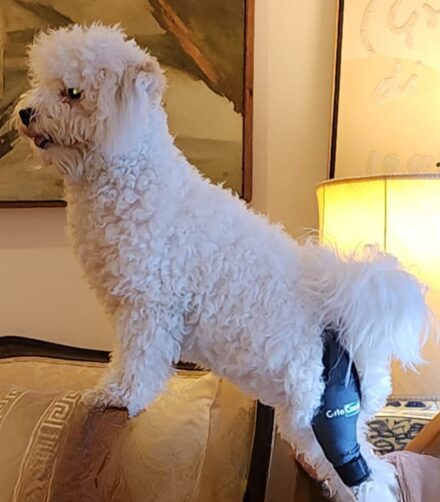Whether you’re a dog lover with a passion for entrepreneurship or seeking a flexible side hustle, dive into our article to unleash the keys to a successful dog sitting venture!
Starting a dog sitting business can be a rewarding venture for individuals who love animals and have a genuine interest in their well-being. Here are some steps to help you get started:

- Research and Planning: Market Research: Identify the demand for dog sitting services in your area. Analyze the competition and understand the needs of pet owners. Remember working with animals, especially pets means you are working with families. Once you know and understand the needs of your immediate pet community you are in a stronger position to set up a business which is helpful and will be successful. Remember to keep a track of you finances- your income, expenses, and taxes. Create a detailed business plan outlining your services, target market, pricing, marketing strategy, and financial projections.
- Legal Considerations: Business Structure: Decide on the legal structure of your business (sole proprietorship, LLC, etc.). It always advisable to take the counsel of professionals in legal, accounting and business structural matters. Insurance: Consider getting liability insurance to protect yourself in case of accidents or injuries.
- Skills and Training: Pet First Aid/CPR Certification: Consider getting certified in pet first aid and CPR. If you trained in basic CPR for dogs it gives your clients confidence and a security to know their pets are in safe hands. Veterinary care may not be close by in certain neighbourhoods so your knowledge of CPR may mean saving a pets life.
- Set Up Your Space: Is it going to be in a Home or Facility: Decide if you will run the business from your home or if you need to lease a facility. There is a lot of work involved in setting up a facility (not to mention capital required). It may be a better idea to start small and work from home (or you can go to peoples homes to pet sit) It can also depend on your apartment complex, condominium rules about pets (they may allow your pets but not visiting pets). Permits and Licenses: Check local regulations and obtain any necessary permits or licenses for operating a pet care business.
- Services and Pricing: Before you begin it is a good idea to Define Services, be clear and outline the services you will offer, such as dog walking, overnight stays, grooming, etc. Do not over market or try to offer too many services, start small, perfect what you offer before moving onto the next step. Pricing Structure: Determine your pricing strategy based on factors like location, services provided, and local competition.
- Marketing and Branding: Create a Brand: Develop a brand for your business, including a name, logo, and branding materials. Online Presence: Create a website and utilize social media platforms to showcase your services. Networking: Build relationships with local veterinarians, pet stores, and other pet-related businesses. Testimonials and Reviews: Encourage satisfied clients to leave reviews and testimonials. Build a Reputation:Quality Service: Provide excellent care for the dogs in your care to build a positive reputation.
- Client Contracts and Policies: Have a clear and detailed contract outlining your services, fees, and terms. Policies: Establish policies regarding cancellation, payment, emergency situations, and any other relevant issues. Record Keeping: Client Records: Maintain detailed records of each client’s contact information, pet details, and any special instructions.
- Equipment and Supplies: Dog Essentials: Ensure you have necessary equipment such as leashes, bowls, bedding, toys, etc.
- Pet Care Knowledge: Acquire knowledge about different dog breeds, behavior, and basic training techniques.
- Safe and Comfortable Environment: Ensure that your space is safe, clean, and provides a comfortable environment for dogs. Safety Measures: Implement safety measures to prevent accidents and escapes.
Remember that building a successful dog sitting business takes time and effort. Building trust with clients and their pets is crucial for long-term success. Always prioritize the well-being and safety of the animals in your care.
Can students be Dog Sitters?
Absolutely, students can be dog sitters! In fact, being a student can offer some advantages for starting a dog sitting business:
Photo by Samson Katt from Pexels: https://www.pexels.com/photo/woman-sitting-on-a-couch-with-her-dog-5255148/
- Flexible Schedule: Many students have flexible schedules, especially if they’re able to set their own study hours. This can be beneficial for accommodating the varied needs of dog owners. Dog sitting is a great way to earn while continuing your education.
- Passion and Energy: Students often have a genuine love for animals, and their energy and enthusiasm can be great assets when caring for dogs.
- Extra Income: Dog sitting can be a convenient way for students to earn some extra income while doing something they enjoy. Dogs are known to help students stay calmer and even help concentration when they study.
- Build Experience and Skills: Taking care of dogs can be a valuable experience, teaching responsibility, time management, and communication skills. You never know, this part time business/ hobby may grow into a post college business. It is also a great opportunity to meet new people and families from various cultures and with varied interests.
However, it’s important to consider a few factors:
- Time Management: Ensure that your academic responsibilities are the priority. Make sure you can balance your study commitments with the responsibilities of dog sitting.
- Legal and Regulatory Considerations: Check local regulations and your living situation (if you’re in a dormitory or rented accommodation) to ensure that dog sitting is allowed.
- Physical Ability: Caring for dogs can be physically demanding, so make sure you are capable of handling the responsibilities.
- Insurance: Consider liability insurance to protect yourself in case of any accidents or injuries involving the dogs in your care.
If you can manage these considerations, being a student should not be a barrier to starting a dog sitting business. In fact, it can be a fulfilling and enjoyable way to earn some income while pursuing your studies.
Who is a Dog Sitter? What to look for when hiring for your business-
A dog sitter is someone who takes care of dogs on behalf of their owners when the owners are away or unable to provide care. Dog sitters offer services that can range from short visits to the owner’s home to extended stays at the sitter’s location. The primary goal of a dog sitter is to ensure the well-being, comfort, and safety of the dogs in their care.
Here are some common responsibilities of a dog sitter:
- Feeding: Providing regular and appropriate meals for the dogs, following the owner’s instructions regarding diet.
- Exercise: Engaging in physical activities, such as walking or playing, to keep the dogs active and healthy.
- Companionship: Spending time with the dogs, offering companionship, and providing attention to meet their social needs.
- Basic Training: Reinforcing any training commands or behaviors that the owner has established.
- Administering Medications: If necessary, administering medications according to the owner’s instructions.
- Basic Grooming: Brushing, bathing, and maintaining the cleanliness of the dogs, as required.
- Monitoring Health: Keeping an eye on the dogs’ health and recognizing signs of illness or distress, reporting any concerns to the owner.
- Home Security: Ensuring the security of the owner’s home, such as bringing in mail, alternating lights, and maintaining a presence to deter potential intruders.
- Communication: Providing regular updates to the owner, including photos and information about the dog’s well-being.
Dog sitters may operate in various settings, including the owner’s home, the sitter’s home, or even through a specialized facility. Some dog sitters offer additional services such as dog walking, grooming, and training. It’s important for dog sitters to have a genuine love for animals, be responsible, and possess the skills necessary to handle different breeds and personalities. Additionally, building trust with clients is crucial for a successful dog sitting business.
Help me choose a Dog Sitter for my Dog
Video by Ivan Samkov: https://www.pexels.com/video/a-female-photographer-working-with-a-laptop-7392790/
Choosing a dog sitter is an important decision, as you want someone trustworthy and reliable to care for your furry friend. It can be a long tiring process, but take your time! Here are some steps to help you choose the right dog sitter:
- Ask for Recommendations: Seek recommendations from friends, family, neighbors, or your veterinarian. Personal referrals can provide insights into the quality of a dog sitter’s services.
- Check Online Reviews: Look for online reviews on platforms like Google, Yelp, or specialized pet care websites. Reading about other clients’ experiences can give you a sense of the dog sitter’s reputation.
- Interview Potential Sitters: Conduct interviews with potential dog sitters. Ask about their experience, services offered, and how they handle emergencies or unexpected situations.
- Verify References: Request and check references from previous clients. A reputable dog sitter should be willing to provide references that can vouch for their reliability and the quality of their care.
- Visit Their Facility (if applicable): If the dog sitter operates from a facility or their home, schedule a visit. Ensure that the environment is clean, safe, and suitable for your dog. Check for any potential hazards.
- Discuss Your Dog’s Needs: Clearly communicate your dog’s needs, routine, and any special requirements. A good dog sitter should be attentive to your instructions and willing to accommodate your dog’s specific needs.
- Ask About Training and Certification:
- Inquire about the dog sitter’s training and certifications, especially in areas like pet first aid and CPR. These credentials demonstrate a commitment to the well-being of animals.
- Insurance and Bonding: Check if the dog sitter has liability insurance and is bonded. This provides added protection in case of accidents or incidents while your dog is in their care.
- Trial Period: Consider arranging a short trial period to observe how the dog sitter interacts with your dog and whether there is a good rapport. This can help you assess their suitability before committing to longer periods.
- Trust Your Instincts: Pay attention to your gut feeling. If something doesn’t feel right or you have reservations, it’s okay to continue your search for a dog sitter.
Remember, the safety and well-being of your dog are paramount. Taking the time to thoroughly vet potential dog sitters will give you peace of mind knowing that your furry companion is in good hands while you’re away.
6 Basic dog behaviours every dog sitter must know
Understanding basic dog behaviors is crucial for any dog sitter to ensure a positive and safe experience for both the dogs and the sitter. Here are five fundamental dog behaviors that every dog sitter should be familiar with:
- Body Language: Tail Wagging: While wagging can indicate happiness, it’s essential to consider the context. A slow wag or a tucked tail may signal discomfort or fear. Stress Signals: Panting and Drooling: Excessive panting and drooling can indicate stress or discomfort.
- Aggression and Fear: Growling and Barking: Dogs may growl when they feel threatened or uncomfortable. Barking can be a sign of excitement, alertness, or distress. Barking: Dogs bark for various reasons, including alerting, expressing excitement, or communicating discomfort. Understanding the context behind the barking is crucial.
- Play Behavior: Bowling: The classic play bow, where a dog lowers its front end while keeping its hindquarters elevated, is an invitation to play. Barking and Pouncing: Dogs may bark, chase, or pounce during play, but it’s essential to monitor their interactions to ensure it remains friendly.
- Communication: Sniffing: Dogs use their sense of smell to gather information about their environment and other animals. Whining or Yawning: Dogs may whine or yawn when anxious or stressed. Yawning, especially in non-tired situations, can be a calming signal. Pacing or Whining: Some dogs exhibit anxious behaviors like pacing or whining when left alone.
- Separation Anxiety and destructive behaviour: Chewing furniture, excessive barking, or inappropriate elimination can be signs of separation anxiety.
- Body Posture: An aggressive dog may stand tall with a stiff body, while a fearful dog may cower or lower its body. This is especially important to know and understand if you are going to work with dogs in the vicinity of children. Ears and Eyes: Erect ears and alert eyes indicate interest, while flattened ears or averting eyes may suggest fear or submission.
Being attentive to these behaviors allows a dog sitter to respond appropriately and ensure the well-being of the dogs in their care. Additionally, clear communication with the dog owners about their pets’ typical behaviors and any specific instructions will help the dog sitter provide the best possible care.
All of these tips and ideas are for you to think about, research, and decide if Dog sitting is the path you want to follow. Maybe begin with dog walking? Take it slow, talk to pet families and shelters, you will be amazed at the excellent training you will gain from working in a shelter and of course the shelter and dogs up for adoption make a new friend!






















